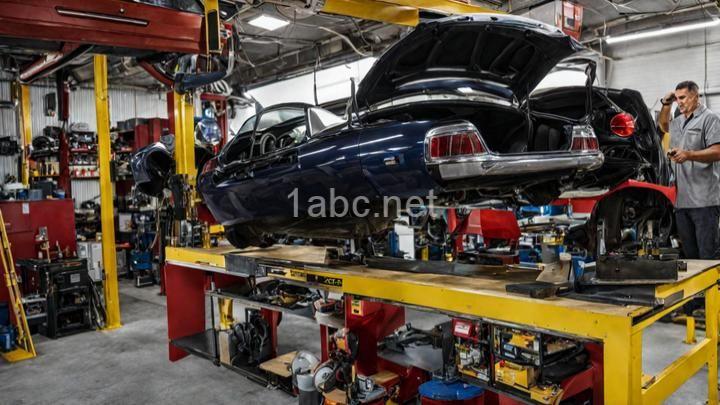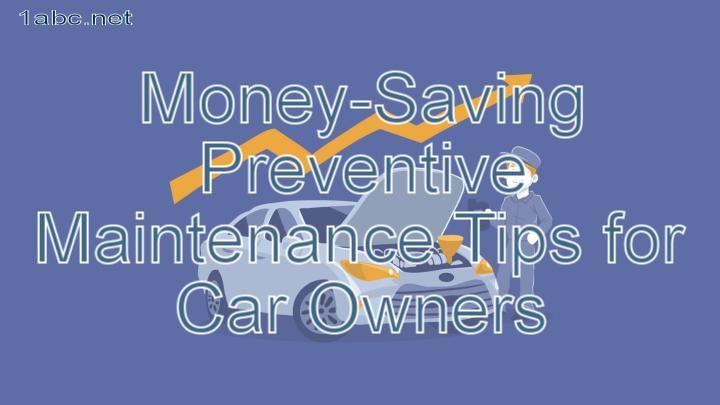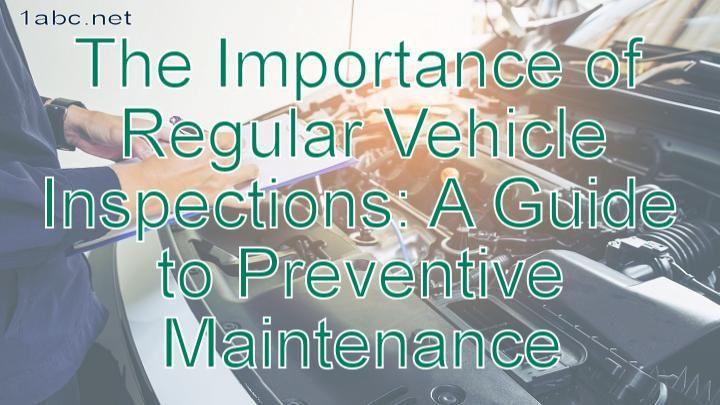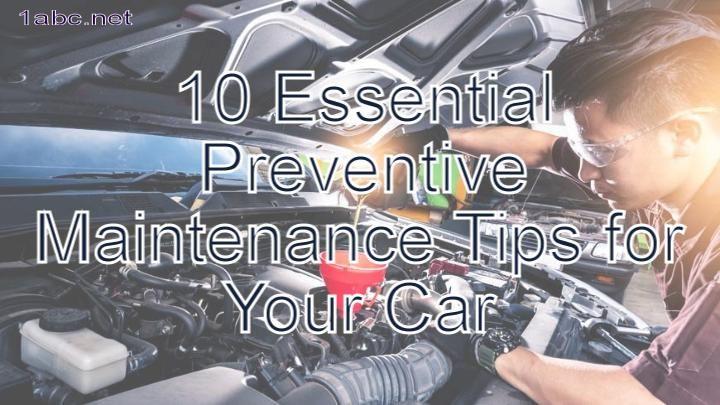The Most Common Auto Repair Problems and How to Troubleshoot Them
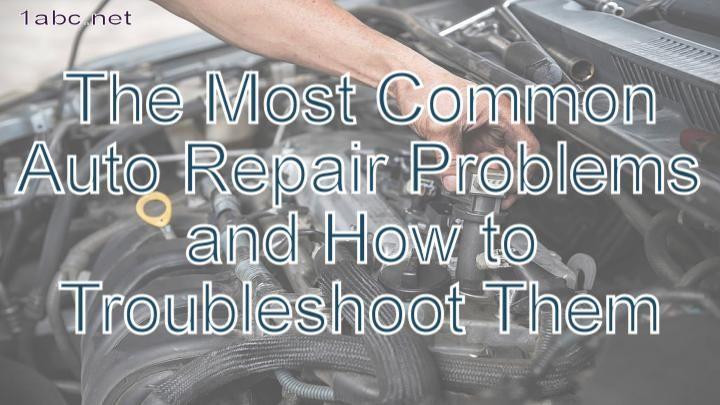
Welcome readers to today's blog post where we will be discussing the most common auto repair problems and providing troubleshooting tips to help you resolve them. Whether you are an experienced car owner or a new driver, understanding these common issues can save you time and money in the long run. So, let's dive right in!
Part I: Introduction
As car owners, we rely on our vehicles for daily transportation and convenience. However, it is inevitable that at some point, we will encounter auto repair problems. By being aware of these issues and knowing how to troubleshoot them, we can minimize the inconvenience and costs associated with repairs.
Part II: Engine Misfire
One of the most common auto repair problems is an engine misfire. This occurs when the engine skips one or more of its firing cycles, resulting in a rough running engine. Some common symptoms of an engine misfire include a shaking or vibrating sensation, loss of power, and a check engine light.
Several factors can contribute to an engine misfire, such as worn or fouled spark plugs, a malfunctioning fuel injector, or a clogged fuel filter. To troubleshoot this problem, start by checking the spark plugs for any signs of wear or damage. If necessary, replace them with new ones. Additionally, inspect the fuel injectors for any blockages or leaks. Cleaning or replacing the fuel injectors may be necessary to resolve the issue.
Part III: Battery Failure
Another common issue that car owners face is battery failure. Signs of a failing battery include difficulty starting the car, dimming headlights, and a clicking sound when turning the key in the ignition. Battery failure can be caused by a variety of factors, such as an old battery, a faulty alternator, or loose battery connections.
To troubleshoot battery failure, start by inspecting the battery connections. Make sure they are tight and free from corrosion. If the connections are loose or corroded, clean them thoroughly or tighten them as needed. Next, test the battery voltage using a multimeter. A healthy battery should have a voltage of around 12.6 volts or higher. If the voltage is significantly lower, it may be time to replace the battery.
Part IV: Braking Issues
Braking issues are not only a safety concern but can also lead to costly repairs if not addressed promptly. Common braking problems include squeaking or grinding noises, a soft brake pedal, or a vibrating sensation when applying the brakes. These issues can be caused by worn brake pads, air in the brake lines, or a faulty brake caliper.
To troubleshoot braking issues, start by inspecting the brake pads. If they are worn down beyond the recommended thickness, replace them immediately. Additionally, bleeding the brake lines can help remove any air bubbles that may be affecting brake performance. If these troubleshooting steps do not resolve the issue, it is recommended to seek professional help as further diagnosis may be required.
Part V: Overheating Engine
An overheating engine is a serious problem that can cause significant damage if not addressed promptly. Signs of an overheating engine include steam coming from the hood, a rapidly rising temperature gauge, or a burning smell. This issue can be caused by a coolant leak, a faulty thermostat, or a malfunctioning radiator fan.
To troubleshoot an overheating engine, start by checking the coolant levels. If they are low, top them up with the appropriate coolant mixture. Inspect the radiator hoses for any signs of leaks or cracks and replace them if necessary. Additionally, check the thermostat for proper operation. If it is faulty, it may need to be replaced to resolve the overheating issue.
Part VI: Transmission Trouble
Transmission issues can range from minor inconveniences to major repairs. Common transmission problems include slipping gears, delays in shifting, or a burning smell coming from the transmission. These issues can be caused by low fluid levels, worn-out clutch plates, or a malfunctioning solenoid.
To troubleshoot transmission trouble, start by checking the transmission fluid levels. If they are low, top them up with the appropriate fluid. Inspect the clutch system for any signs of wear or damage. If the clutch plates are worn out, they may need to be replaced. Additionally, a malfunctioning solenoid can cause transmission issues. If this is the case, seeking professional help may be necessary for proper diagnosis and repair.
Part VII: Conclusion
In conclusion, being aware of the most common auto repair problems and knowing how to troubleshoot them can save you time, money, and frustration. Remember to always prioritize safety and seek professional help if you are unsure about troubleshooting on your own.
We hope you found this blog post informative and helpful. If you have any questions or comments, please feel free to reach out to us. Safe travels and happy troubleshooting!
FREQUENTLY ASKED QUESTIONS
How can I troubleshoot engine overheating issues?
When it comes to troubleshooting engine overheating issues, there are several steps you can take to identify and resolve the problem:
- Check coolant level: Make sure the coolant reservoir is filled to the required level. If it's low, top it up with the recommended coolant mixture.
- Inspect for leaks: Look for any visible signs of coolant leaks, such as puddles underneath the vehicle or wet spots on engine components. Repair any leaks found.
- Check the radiator fan: Ensure that the radiator fan is working properly. The fan should turn on when the engine reaches a certain temperature. If it's not functioning, the fan motor or related components may need to be replaced.
- Check the radiator cap: Ensure that the radiator cap is in good condition and properly sealed. A faulty cap can cause coolant to boil and overflow, leading to overheating.
- Inspect the thermostat: The thermostat regulates the flow of coolant through the engine. If it fails, it can cause overheating. Consider replacing the thermostat if it's suspected to be faulty.
- Check the water pump: The water pump circulates coolant throughout the engine. If it's not functioning correctly, the coolant won't flow properly, leading to overheating. Look for signs of a leaking or damaged water pump and replace if necessary.
- Clean the radiator: Over time, debris and dirt can accumulate on the radiator fins, obstructing airflow and causing overheating. Gently clean the radiator with a soft brush or compressed air to remove any buildup.
- Inspect the cooling system hoses: Check for any cracked, worn-out, or collapsed hoses. Replace them if necessary, as damaged hoses can lead to coolant leakage and overheating.
If you've gone through these troubleshooting steps and the issue persists, it may be advisable to take your vehicle to a qualified mechanic for further diagnosis and repair.
How can I diagnose and fix a dead battery?
To diagnose and fix a dead battery, you can follow these steps:
- Check the battery connections: Ensure that the battery terminals are clean and securely connected. If there is corrosion, clean it using a battery terminal cleaner or a mixture of baking soda and water.
- Test the battery voltage: Use a multimeter to measure the voltage of the battery. A fully charged battery should measure around 12.6 volts. If the voltage is significantly lower, it may indicate a dead battery.
- Jump-start the vehicle: If the battery voltage is low but not completely dead, you can jump-start the vehicle using jumper cables and another vehicle with a good battery. Allow the dead battery to charge for a few minutes before attempting to start the vehicle.
- Check the battery age: If the battery is several years old, it may be nearing the end of its lifespan. In that case, it may be necessary to replace the battery.
- Consult a professional: If you are unsure about the condition of the battery or unable to resolve the issue yourself, it is recommended to consult a professional mechanic or take your vehicle to a reputable auto repair shop. They will have the necessary equipment and expertise to diagnose and fix the battery problem.
Remember to exercise caution when working with batteries, as they contain corrosive chemicals and can be dangerous if mishandled.
What should I do if my car is leaking oil?
If your car is leaking oil, it is important to take immediate action to prevent further damage. Here are the steps you should follow:
- Safety first: Park your car in a safe location away from traffic and turn off the engine.
- Assess the leak: Identify the source of the oil leak. Look for any visible holes, loose fittings, or damaged parts that may be causing the oil to leak.
- Check the oil level: Open the hood and check the oil level using the dipstick. If the oil level is too low, top it up with the correct type and grade of oil.
- Do not drive: If the oil level is critically low or you cannot determine the extent of the leak, do not drive the car. Driving with insufficient oil can cause serious engine damage.
- Call for assistance: If you are not comfortable diagnosing or fixing the issue yourself, call a professional mechanic or towing service to safely transport your car to a repair shop.
- Repair or replace: Once at the repair shop, a qualified technician will inspect the vehicle, identify the cause of the oil leak, and provide you with repair or replacement options.
Remember, addressing an oil leak promptly can help prevent further damage to your engine and ensure the long-term health of your vehicle.
What is The Most Common Auto Repair Problems and How to Troubleshoot Them?
Auto repair problems can vary depending on the make and model of the car, as well as its age and maintenance history. However, there are several common issues that many car owners encounter. Here are some of the most common auto repair problems and troubleshooting steps you can take:
- Dead Battery: If your car won't start and you hear a clicking sound when you turn the key, it may indicate a dead battery. To troubleshoot, check if the battery connections are tight and free from corrosion. Jump-starting the battery or replacing it might be necessary.
- Engine Misfire: A misfiring engine can cause rough idling, reduced power, and poor fuel efficiency. Causes can include worn spark plugs, faulty ignition coils, or a clogged fuel injector. Troubleshoot by inspecting and replacing spark plugs or any other faulty components.
- Overheating: If your car's temperature gauge is in the red zone or steam is coming from under the hood, it indicates an overheating problem. Check coolant levels, radiator hoses, and the radiator itself. A faulty thermostat or water pump could also be the cause.
- Check Engine Light: The check engine light can illuminate for numerous reasons, ranging from a loose gas cap to catalytic converter failure. Using an OBD-II scanner can help diagnose the specific issue. However, it's best to consult a professional mechanic for a proper diagnosis and repair.
- Braking Issues: Spongy brakes, grinding noises, or a pulsating brake pedal can be signs of brake problems. Check brake fluid levels and the condition of brake pads and rotors. Brake components may need replacing if worn or damaged.
- Transmission Problems: Symptoms of transmission issues include slipping gears, delayed shifting, or leaking fluid. Regular transmission fluid checks and servicing can prevent problems. If issues persist, consult a professional mechanic.
- Suspension and Steering: If your car experiences excessive bouncing, veering to one side, or vibrating at high speeds, it could indicate problems with the suspension or steering components. Inspect for damaged or worn-out parts, such as shocks, struts, tie rods, or ball joints, and replace as necessary.
Remember, these troubleshooting steps are general guidelines, and it's important to have a qualified mechanic diagnose and repair any serious automotive problems. Regular vehicle maintenance and prompt attention to issues can help prevent major breakdowns and increase the lifespan of your car.
What kind of auto repair problems are covered in this guide?
This guide covers a wide range of auto repair problems, including but not limited to:
- Engine issues such as misfires, overheating, or stalling
- Transmission problems like slipping gears or shifting difficulties
- Brake system malfunctions, such as squeaking or grinding noises
- Electrical problems including faulty wiring or dead batteries
- Suspension and steering issues like bouncing or pulling to one side
- Exhaust system troubles, such as exhaust leaks or strange smells
- Cooling system failures, such as radiator leaks or coolant loss
- Fuel system problems like clogged filters or fuel pump issues
- Ignition system malfunctions, including problems with the spark plugs or ignition coil
- HVAC system difficulties, such as weak airflow or malfunctioning air conditioning
Please note that this is not an exhaustive list, and the guide may cover additional auto repair problems based on its content.
